Bayliner 2002 3988 Command Bridge Owner's manual
- Category
- Carbon monoxide (CO) detectors
- Type
- Owner's manual



Port Engine Serial Number:
Stbd. Engine Serial Number:
Hull Identification Number:
Hull Identification Number
The Hull Identification Number (HIN) is located on the starboard side of the transom. Be sure to record the HIN (and
the engine serial numbers) in the space provided above. Please refer to the HIN for any correspondence or orders.
© 2001 Bayliner Technical Publications. All rights reserved.
No part of this publication may be reproduced, stored in any retrieval system, or transmitted in any form by any means, electronic, mechanical,
photocopying, recording or otherwise, without prior written permission of Bayliner.
Printed in the United States of America.
General Notes
The material in this document is for information only and is subject to change without notice. While reasonable efforts have been made in the
preparation of this document to assure its accuracy, Bayliner assumes no liability resulting from errors or omissions in this document, or from
the use of information contained herein.
Due to our commitment to product improvement, Bayliner reserves the right to make changes in the product design, specifications, and equip-
ment at any time without notice or obligation. Illustrations and/or photos may show optional equipment.
All Bayliner products meet or exceed USCG (Unites States Coast Guard) and/or NMMA (National Marine Manufacturer’s Association) con-
struction standards. Manufactured with 1,1,1 Trichloroethane, a substance which harms public health and environment during the manufactur-
ing process by destroying ozone in the upper atmosphere.
Proprietary Rights
This document discloses subject matter in which Bayliner has proprietary rights. The information and design disclosed herein were originated
by and are the property of Bayliner. Neither receipt nor possession thereof confers or transfers any right to reproduce, copy, alter or disclose the
document or any part thereof, any information contained therein, or to construct boats or any item from it, except by written permission from or
written agreement with Bayliner. This document is to be returned upon request to Bayliner.
HIN LOCATION

CONTENTS
CHAPTER 1: WELCOME ABOARD!
1 Dimensions and Capacities
1 Layout View
1 Dealer Service
1 About Your Limited Warranty
2 Boating Experience
2 Safety Standards
2 Engine/Accessories Guidelines
3 Qualified Maintenance
3 Special Care For Moored Boats
3 Sacrificial Anodes (Zinc Plates)
4 Carbon Monoxide (CO)
5 Sources of CO
5 Carbon Monoxide Alarm System
5 What To Do If Carbon Monoxide Is Detected
6 Yacht Lifting
6 Lifting Sling Positions
CHAPTER 2: COMPONENTS / SYSTEMS
7 Hull Exterior Hardware & Drains
8 Deck Equipment
8 Deck Fill & Pump-out Locations
8 Anchor Windlass
8 Windshield Wipers
9 Helm Features
9 Command Bridge Helm
10 Lower Helm
11 Navigation & Communication Equipment
11 VHF Radio
11 Depth Finder
11 Compass
12 Radar/Plotter (If Equipped)
12 Global Positioning System (GPS) (If Equipped)
12 Autopilot (If Equipped)
13 Navigation & Interior Lights
13 Spotlight
14 Controls
14 Steering System
14 Rudder Stuffing Gland
14 Trim Tabs
15 Propulsion
15 Engines
15 Engine Room Ventilation System
15 Engine Cooling System
16 Exhaust System
16 Oil Change System (If Equipped)
17 Fuel System
17 Fuel Quality
17 Fuel Filters & Separators
18 Fuel Transfer Pump (Diesel Systems Only)
18 Anti-siphon Valve (Gas Engines Only)
18 Fuel Fills & Vents
19 Fuel System Diagrams
20 Shaft-Transmission Alignment
20 Shaft Log Packless Sealing System
21 Electrical System
22 12-Volt DC System
22 Fuses and Circuit Breakers
22 Battery Switches
23 Batteries
23 Engine Alternators
23 Battery Charger
24 110-Volt AC System
24 Shore Power
25 Connecting To Shore Power
26 Generator Power
27 Fresh Water System
27 110-Volt Water Heater
28 Transom Shower (If Equipped)
28 Gray Water Drain System
28 Sump Box Cleaning
28 Sump System Winterizing
29 Seawater Systems
29 Seacocks
30 Seawater Strainers
30 Wash Down System (If Equipped)
31 Marine Head System with Holding Tank
32 Vacuflush Head System (If Equipped)

33 Bilge Pumps
34 Bilge Pump Testing
34 Autofloat Switches
35 Air Conditioner & Heater (If Equipped)
36 Electric Heaters (If Equipped)
36 Heat Exchanger Cabin Heater (If Equipped)
37 Appliances
37 110-Volt AC/12-Volt DC Refrigerator
37 Range/Oven
37 Microwave Oven
37 Audio & Visual Equipment
CHAPTER 3: WIRING DIAGRAMS
38 Standard Dual Dockside
39 Accessory DC Circuits
40 Gas Engine Electrical System
41 Diesel Engine Electrical System

Hazard Boxes & Symbols
The hazard boxes and symbols shown below are used throughout this supplement to call attention to potentially dan-
gerous situations which could lead to either personal injury or product damage. Read ALL warnings carefully and
follow all safety instructions.
DANGER!
!
This box alerts you to immediate hazards which WILL cause severe personal injury or death if
the warning is ignored.
This box alerts you to hazards or unsafe practices which COULD result in severe personal
injury or death if the warning is ignored.
WARNING!
!
This box alerts you to hazards or unsafe practices which COULD result in minor personal
injury or cause product or property damage if the warning is ignored.
CAUTION!
!
NOTICE
This box calls attention to installation, operation or maintenance information, which is impor-
tant to proper operation but is not hazard related.
EXPLOSION
HAZARD!
OPEN FLAME
HAZARD!
HOT
HAZARD!
ROTATING
PROPELLER HAZARD!
PERSONAL INJURY
& FALLING HAZARD!
ELECTRICAL
HAZARD!
CO POISONING
HAZARD!

1
3988 Command Bridge Motoryacht
•
Owner’s Manual Supplement
CHAPTER 1: WELCOME ABOARD!
This Owner’s Manual Supplement provides specific information about your yacht that is not covered in the Cruiser &
Yacht Owner’s Manual. Please study the Cruiser & Yacht Owner’s Manual and this supplement carefully. Keep the
Cruiser & Yacht Owner’s Manual and this supplement on your yacht in a secure, yet readily available place.
Dimensions and Capacities
Layout View
Dealer Service
Make sure you receive a full explanation of all systems from the selling dealer before taking delivery of your yacht.
Your selling dealer is your key to service. If you have any problems with your new yacht, immediately contact the sell-
ing dealer. If your selling dealer is unable to help, call us direct on our customer service hotline: 360-435-8957 or send
us a FAX: 360-403-4235. A Bayliner replacement parts catalog is available online at: http://www.baylinerparts.com.
Replacement parts can be purchased from any authorized Bayliner dealer.
About Your Limited Warranty
Bayliner offers a Limited Warranty on each new Bayliner purchased through an authorized Bayliner dealer. A copy
of the Limited Warranty was included in your owner’s packet. If for any reason, you did not receive a copy of the
Limited Warranty, please contact your local dealer or call 360-435-8957 for a replacement copy.
Overall
Length
Bridge
Clearance
Beam Draft
Fuel Tank
Capacity (gal)
Water Tank
Capacity (gal)
Holding Tank
Capacity (gal)
39' 0" 14' 10" 13' 11" 3' 3" 298 100 36
LOWER
HELM
AC
PANEL
SALON
TABLE
DINNETTE
TABLE
ENGINE
ACCESS
HANGING
LOCKER
HANGING
LOCKER
HANGING
LOCKER
DOUBLE
BERTH
MIDSHIP
BERTH
COCKPIT
HATCH
COCKPIT
HATCH
ROPE
LOCKER
ANCHOR
LOCKER
SHELF
SHELF
REFRIG.
STOVE
W/ OVEN
UNDER
ICE
MAKER
UNDER
SINK
MICROWAVE
OVER
T.V. STAND
& STEREO
CABINET
HEAD W/
SHOWER
HEAD W/
BATHTUB
SALON SOFA
CONVERTS TO BERTH

2 CHAPTER 1: WELCOME ABOARD!
3988 Command Bridge Motoryacht
•
Owner’s Manual Supplement
Boating Experience
If this is your first yacht or if you are changing to a type of yacht you are not familiar with, for your own comfort and
safety, please make sure that you obtain handling and operating experience before assuming command of the yacht.
Take one of the boating safety classes offered by the U.S. Power Squadrons or the U.S. Coast Guard Auxiliary. For
more course information, including dates and locations of upcoming classes, contact the organizations directly:
• U.S. Power Squadrons: 1-888-FOR-USPS (1-888-367-8777) or on the Internet at: http://www.usps.org
• U.S. Coast Guard Auxiliary: 1-800-368-5647 or on the Internet at: http://www.cgaux.org
Outside the United States, your selling dealer, national sailing federation or local boat club can advise you of local
sea schools or competent instructors.
Safety Standards
Your yacht’s mechanical and electrical systems were designed to meet safety standards in effect at the time it was
built. Some of these standards were mandated by law, all of them were designed to insure your safety, and the safety
of other people, vessels and property.
In addition to this owner’s manual supplement, read the Cruiser & Yacht Owner’s Manual and all accessory
instructions for important safety standards and hazard information.
Engine/Accessories Guidelines
Your yacht’s engine and accessories were selected to provide optimum performance and service. Installing a different
engine or other accessories may cause unwanted handling characteristics. Should you choose to install a different
engine or to add accessories that will affect the yacht’s running trim, have an experienced marine technician perform
a safety inspection and handling test before operating your yacht again.
Certain modifications to your
yacht can result in cancellation of your warranty protection. Always check with
your dealer before making any modifications to your yacht.
The engine and accessories installed on your yacht come with their own operation and maintenance manuals. We
strongly urge you to read and understand these manuals before operating the engine and accessories.
CONTROL HAZARD! A qualified operator must be in control of the yacht at all times. DO NOT
operate your yacht while under the influence of alcohol or drugs.
WARNING!
!
DANGER
PERSONAL SAFETY HAZARD! Do not allow anyone to ride on parts of the yacht
not designated for such use. Sitting on seat backs, lounging on the forward deck,
bow riding, gunwale riding or occupying the transom platform while underway
is especially hazardous and will cause personal injury or death.
DANGER!
!
DANGER
PERSONAL SAFETY HAZARD! Always secure the anchor and other loose objects before getting
underway. The anchor and other items that are not properly secured can come loose when the
boat is moving and cause personal injury or death.
DANGER!
!
NOTICE
When storing your yacht please refer to your engine’s operation and maintenance manuals.

CHAPTER 1: WELCOME ABOARD! 3
3988 Command Bridge Motoryacht
•
Owner’s Manual Supplement
Qualified Maintenance
Failure to maintain these systems (listed in the warning above) as designed could violate the laws in your jurisdiction
and could expose you and other people to the danger of bodily injury or accidental death. Follow the instructions pro-
vided in this supplement, the Cruiser & Yacht Owner’s Manual, the engine owner’s manual and the accessory
instruction sheets included with your yacht.
Special Care For Moored Boats
Whether moored in saltwater or freshwater, your yacht will collect marine growth on its hull bottom. This will detract
from the yacht’s beauty, greatly affect its performance and may damage the gelcoat. There are two methods of slow-
ing marine growth:
• Periodically haul the yacht out of the water and scrub the hull bottom with a bristle brush and a solution of soap
and water.
• The hull below the waterline was painted with anti-fouling paint by the factory. Occasionally you will need to re-
paint it with a good grade of anti-fouling paint.
Sacrificial Anodes (Zinc Plates)
Your yacht is equipped with sacrificial anodes (zinc plates) to protect
underwater metal parts from excessive deterioration. Check the zinc
plates regularly and replace them if they have deteriorated more than
70%. There are many factors that affect the rate at which zinc plates
deteriorate, including:
• Water temperature
• Salinity
• Water pollution
Stray current from your yacht or the dock may cause complete deteri-
oration of the zinc plates in just a few weeks. If there is rapid zinc
deterioration, measure electrolytic corrosion around your yacht with
a corrosion test meter. If zinc plates are not bonded correctly, they
will not provide protection.
To maintain the integrity and safety of your yacht, only qualified personnel should perform
maintenance on, or in any way modify: The steering system, propulsion system, engine control
system, fuel system, environmental control system, or electrical system.
WARNING!
!
NOTICE
• To help seal the hull bottom and reduce the possibility of gelcoat blistering on moored
yachts, we recommend the application of an epoxy barrier coating, such as INTERLUX,
Interprotect 2000E/2001E. The barrier coating should be covered with several coats of anti-
fouling paint.
• Many states regulate the chemical content of bottom paints in order to meet environmental
standards. Check with your local dealer about recommended bottom paints, and about the
laws in effect in your area.
NEW
DETERIORATED
SACRIFICIAL
ANODE
SACRIFICIAL
ANODE
Do not paint between the zinc and the metal surface it contacts and do not paint over the zincs.
NOTICE

4 CHAPTER 1: WELCOME ABOARD!
3988 Command Bridge Motoryacht
•
Owner’s Manual Supplement
Carbon Monoxide (CO)
• CO poisoning causes a significant number of boating deaths each year.
• Called the "silent killer", CO is an extremely toxic, colorless, odorless and tasteless gas.
• Breathing CO blocks the ability of your blood to carry oxygen.
• The effects are cumulative, even low levels of exposure can result in injury or death.
Factors increasing the effects of CO poisoning include:
• Age
• Smokers or people exposed to high concentrations of cigarette smoke
• Consumption of alcohol
• Lung disorders
• Heart problems
• Pregnancy
DANGER
CARBON MONOXIDE POISONING HAZARD!
Carbon monoxide gas (CO) is colorless, odorless, and extremely dangerous. All
engines, generators, and fuel burning appliances produce CO as exhaust. Direct and
prolonged exposure to CO will cause BRAIN DAMAGE or DEATH.
Signs of CO poisoning include:
• Headache
• Nausea
• Dizziness
• Drowsiness.
DANGER!
!

CHAPTER 1: WELCOME ABOARD! 5
3988 Command Bridge Motoryacht
•
Owner’s Manual Supplement
Sources of CO
Sources of CO include:
To correct stationary situations (a) and/or (b):
• Close all windows, portlights and hatches.
• If possible, move your yacht away from source of CO.
To correct running situations (c) and/or (d):
• Trim bow down.
• Open windows and canvas.
• When possible, run yacht so that prevailing winds will help dissipate exhaust.
IMMEDIATELY take corrective action if CO is detected (see, Carbon Monoxide Alarm System, below).
Carbon Monoxide Alarm System
Your yacht may feature a carbon monoxide (CO) alarm system. DO
NOT DISCONNECT THE ALARM SYSTEM. Read and understand
the manufacturer’s instructions for your CO alarm system. If you did
not receive an instruction manual, call (800) 383-0269 and one will be
mailed to you. If your yacht is not equipped with a carbon monoxide
alarm, consider purchasing one from your dealer or marine supply store.
What To Do If Carbon Monoxide Is Detected
• Immediately ventilate and evacuate any enclosed spaces that are
occupied by people and reset your CO alarm.
• Immediately move anyone showing any symptoms of CO poisoning
into fresh air. See a doctor if any symptoms persist. If the person is
unconscious, immediately administer oxygen or CPR and call for
emergency help.
c. Running boat
with trim angle
of bow too high.
b. Mooring close to
another boat that
is using its engine,
generator or any
other CO source.
a. Using engine or
generator when
boat is moored in
a confined space.
d. Running boat without
through ventilation
(station wagon effect).
MARINE TECHNOLOGIES INC.
CARBON MONOXIDE ALARM - MODEL 60-541
(REPLACE AFTER TEN YEARS OF USE)

6 CHAPTER 1: WELCOME ABOARD!
3988 Command Bridge Motoryacht
•
Owner’s Manual Supplement
Yacht Lifting
• Always follow the lift equipment’s instructions and requirements.
• If water is present in the bilge, pump the water out of the bilge areas before lifting your yacht. Water in the bilge
can shift and change the balance of the load.
Lifting Sling Positions
When lifting your yacht, position the lifting slings at the port and starboard sling label positions as shown in the illus-
tration above.
PERSONAL INJURY and /or PRODUCT OR PROPERTY DAMAGE HAZARD!
• Lift slings may slip on the hull. Avoid serious injury or death by securing the slings together
before lifting.
WARNING!
!
PRODUCT OR PROPERTY DAMAGE HAZARD!
• When lifting any boat, always use a spreader bar. The spreader bar must be equal to the
width of the boat at the lifting point.
CAUTION!
!

7
3988 Command Bridge Motoryacht
•
Owner’s Manual Supplement
CHAPTER 2: COMPONENTS / SYSTEMS
Hull Exterior Hardware & Drains
FUEL TANK VENT
DECK
AFT BILGE PUMP
PORTLIGHTS DECK DRAIN
THRU-HULLS
DRAINS
GALLEY
DRAIN
WATER TANK
VENT
STBD HEAD
OVERBOARD
MACERATOR
PUMP-OUT
STBD HEAD
SINK DRAIN
ANCHOR LOCKER
AIR COND DISCHARGE
(IF EQUIPPED)
DECK DRAINS
FUEL TANK VENT
PORTLIGHTS
VENTILATION LOUVERS
PORT HULLSIDE
STARBOARD HULLSIDE
SACRIFICIAL ANODE
TRIM TAB
RUDDER
STERN EYE
(TYPICAL)
(ZINC PLATE)
(TYPICAL)
(TYPICAL)
CITY WATER INLET
(IF EQUIPPED)
GENERATOR
EXHAUST
THRU-HULL
TRANSOM
WASTE TANK
VENT
THRU-HULL
FWD BILGE PUMPS
MID BILGE PUMPS
SHOWER DRAIN
MULTI-PORT
PORT HEAD
SINK DRAIN
DRAIN
AIR COND DISCHARGE
(IF EQUIPPED)

8 CHAPTER 2: COMPONENTS / SYSTEMS
3988 Command Bridge Motoryacht
•
Owner’s Manual Supplement
Deck Equipment
Deck Fill & Pump-out Locations
Anchor Windlass
Before using the anchor windlass, read
the windlass manual included in your
yacht’s owner’s packet and observe
the following:
• To haul the anchor, use engine
power (not the windlass) to move
the boat to, and directly over
the anchor.
• Disengage the anchor from the bot-
tom by pulling it straight up with
the windlass. Do not pull the boat
to the anchor using the windlass or
continue to operate the anchor
windlass if it stalls or is overloaded.
Windshield Wipers
The windshield wiper fluid bottle can be accessed through the galley floor cut-out. Wiper blades must be replaced
when they become worn or deteriorate due to weathering. Replace wiper blades using 28” blade refills. Instructions
for replacing the wiper blades can usually be found on the blade replacement package.
FUEL FILL
FRESH
FITTINGS
WATER FILL
WASTE
PUMP-OUT
BOW PLATFORM
WINDLASS
CONTROLS
SPOTLIGHT
ANCHOR
WINDLASS

CHAPTER 2: COMPONENTS / SYSTEMS 9
3988 Command Bridge Motoryacht
•
Owner’s Manual Supplement
Helm Features
Command Bridge Helm
SPOTLIGHT
COMPASS
HOUR METER
FUEL GAUGE
TEMPERATURE
VOLTAGE GAUGE
OIL PRESSURE
TACHOMETER
SHIFT/THROTTLE
TRIM TAB
ROCKER SWITCH
ENGINE
IGNITION
FIRE EXTINGUISHING
SYSTEM SWITCH
HORN BLOWER
FWD BILGE
PUMP
MID BILGE
PUMP
AFT BILGE
PUMP
NAVIGATION
LIGHTS
ANCHOR
LIGHTS
INSTRUMENT
LIGHTS
COURTESY
LIGHTS
ACCESSORY
MANUAL
AUTO
MANUAL
AUTO
MANUAL
AUTO
BATTERY
PARA LLEL

10 CHAPTER 2: COMPONENTS / SYSTEMS
3988 Command Bridge Motoryacht
•
Owner’s Manual Supplement
Lower Helm
COMPASS
BLANK
FUEL GAUGE
TEMPERATURE
VOLTAGE GAUGE
OIL PRESSURE
TACHOMETER
SHIFT/THROTTLE
FWD BILGE
PUMP
NAVIGATION
LIGHTS
ANCHOR
LIGHT
INSTRUMENT
LIGHTS
MID BILGE
PUMP
AFT BILGE
PUMP
ACCESSORY
WINDSHIELD
WASHER
PORT
WIPER
MID
WIPER
STBD
WIPER
BATTERY
PARALLEL
FUEL
TRANSFER
ACCESSORY
BLOWER
HORN
ALARM
IGNITION
PORT STBD
TRIM TAB
ROCKER SWITCH
PRE-HEAT
INDICATOR
AUXILIARY
BLOWER BREAKERS
MANUAL
AUTO
MANUAL
AUTO
MANUAL
AUTO

CHAPTER 2: COMPONENTS / SYSTEMS 11
3988 Command Bridge Motoryacht
•
Owner’s Manual Supplement
Navigation & Communication Equipment
The owner’s packet contains manuals for all navigation & communication equipment installed on your yacht. Thor-
oughly read and understand these manuals before using these systems for the first time and observe the following:
VHF Radio
The VHF radio can be used to access weather reports, summon assistance or contact other vessels as permitted by the
FCC (Federal Communications Commission). Contact the FCC for licensing, rules and regulations concerning VHF
radio usage.
Depth Finder
The depth finder provides you with measurements of water depth beneath the boat.
Compass
Your yacht is equipped with a compass at each helm station. Carefully read and follow the manufacturer’s calibration
and operating instructions provided your owner’s packet.
• Do not use the depth finder as a navigational aid to prevent collision, grounding, boat dam-
age or personal injury.
• When the boat is moving, submerged objects will not be seen until they are already under
the boat. Bottom depths may change too quickly to allow time for the boat operator to react.
If you suspect shallow water or submerged objects, operate the boat at very slow speeds.
WARNING!
!
NOTICE
Compass accuracy can be affected by many factors. Have a qualified technician calibrate your
compass. Make sure the technician gives you a deviation card which shows the corrections to
apply in navigational calculations. Keep a copy of the deviation card at each helm.

12 CHAPTER 2: COMPONENTS / SYSTEMS
3988 Command Bridge Motoryacht
•
Owner’s Manual Supplement
Radar/Plotter (If Equipped)
Your yacht may feature a radar/plotter system at the lower helm. Radar displays the position, size, and distance of
objects around your yacht. The radar/plotter system will assist you in navigation and collision avoidance.
Global Positioning System (GPS) (If Equipped)
Your yacht may feature a GPS system at the lower helm. GPS receivers provide reliable and accurate position data,
anywhere in the world.
Autopilot (If Equipped)
Your yacht may feature an autopilot system which can be turned on at the upper helm station. The autopilot will
assist you in maintaining the chosen heading of your yacht.
Radar is meant to help the navigator, not replace him/her. The operator is responsible for keep-
ing a visual look-out for possible collision situations. No single navigation aid (including this
radar) should be relied upon as the only method for navigating your yacht.
WARNING!
!
NOTICE
Τ
ΤΤ
Τhe radar system is only an aid to navigation. It's accuracy can be affected by many factors,
including equipment failure or defects, environmental conditions & improper handling or use.
The GPS system should not be relied upon as the only aid to navigation. A qualified operator
must monitor the GPS system at all times and keep look-out for other marine traffic and possi-
ble collision situations.
WARNING!
!
NOTICE
Τ
ΤΤ
Τhe GPS system is only an aid to navigation. It's accuracy can be affected by many factors,
including equipment failure or defects, environmental conditions & improper handling or use.
Never leave the helm while the autopilot system is on! A qualified operator must monitor the
autopilot system at all times and keep lookout for other marine traffic and other hazards.
WARNING!
!
NOTICE
Τ
ΤΤ
Τhe autopilot system is only an aid to navigation. It's accuracy can be affected by many factors,
including equipment failure or defects, environmental conditions & improper handling or use.

CHAPTER 2: COMPONENTS / SYSTEMS 13
3988 Command Bridge Motoryacht
•
Owner’s Manual Supplement
Navigation & Interior Lights
Read and understand the navigation light section of the Cruiser & Yacht Owner’s Manual. The navigation and inte-
rior lights installed on your yacht are of top quality, but they may fail occasionally for various reasons:
1. There may be a blown fuse - replace the fuse.
2. The bulb may be burned out - carry spare bulbs for replacement.
3. A wire may be damaged or loose - repair as required.
4. The bulb base may be corroded - clean the base and coat it with non-conductive electrical lubricant.
Spotlight
The spotlight is located on the bow platform and can be controlled from the upper helm station. Read the spotlight
instructions included in your yacht’s owner’s packet.
• Avoid the storage of gear where it would block navigation lights from view.
• Be conservative in the use of battery power. Prolonged use of cabin interior lights (over-
night) will result in a drained battery.
CAUTION!
!
BOW PLATFORM
SPOTLIGHT

14 CHAPTER 2: COMPONENTS / SYSTEMS
3988 Command Bridge Motoryacht
•
Owner’s Manual Supplement
Controls
Steering System
Your yacht is equipped with a manual hydraulic steering system. This system is not the same a car’s power steering
system.
• A rhythmic pulsing when turning the wheel is a characteristic of the pump and is not a malfunction. Also, when
coming off a hard-over position, resistances may be felt, followed by a distinct sound. This is a normal situation
resulting from the release of the system’s check valve.
• The fluid reservoir for the hydraulic steering system is located on the aft wall of the machinery compartment.
Check the fluid levels and pressure regularly.
Rudder Stuffing Gland
The rudder stuffing gland is part of the assembly where the rudders emerge from the bottom of the boat. It is very
similar to the propeller shaft stuffing box and will require the same maintenance. Since it does not receive the same
wear as the propeller shaft, repacking is seldom required. This shaft stuffing gland should not leak any water.
Trim Tabs
The trim tabs may be used to help keep your yacht
level at cruising speeds. The trim tabs are con-
trolled by two rocker switches at the helm. Before
using the trim tabs read and understand the trim
tab operation manual included in your yacht’s
owner’s packet.
Observe the following:
• Once cruising speed is reached, the port or
starboard trim switch may be used (one at a
time) to level the yacht.
• Perform trim tab adjustment with several short
touches to the switch rather than one long one.
• After each short touch allow several seconds for the hull to react.
• The trim tab hydraulic fluid reservoir is located on the aft wall of the machinery compartment. The fluid level
must be checked periodically (at least once a year) and refilled as necessary.
LOSS OF CONTROL HAZARD!
Improper use of trim tabs will cause loss of control!
• Do not allow anyone unfamiliar with trim tabs to operate them.
• Do not use trim tabs in a following sea as they will cause broaching or other unsafe handling
characteristics.
• Do not use trim tabs to compensate for excessive unequal weight distribution.
WARNING!
!
TYPICAL TRIM TAB
TYPICAL TRIM TAB
ROCKER SWITCHES
(LOCATED AT HELM)
(TRANSOM VIEW)
Page is loading ...
Page is loading ...
Page is loading ...
Page is loading ...
Page is loading ...
Page is loading ...
Page is loading ...
Page is loading ...
Page is loading ...
Page is loading ...
Page is loading ...
Page is loading ...
Page is loading ...
Page is loading ...
Page is loading ...
Page is loading ...
Page is loading ...
Page is loading ...
Page is loading ...
Page is loading ...
Page is loading ...
Page is loading ...
Page is loading ...
Page is loading ...
Page is loading ...
Page is loading ...
Page is loading ...
Page is loading ...
Page is loading ...
Page is loading ...
Page is loading ...
Page is loading ...
-
 1
1
-
 2
2
-
 3
3
-
 4
4
-
 5
5
-
 6
6
-
 7
7
-
 8
8
-
 9
9
-
 10
10
-
 11
11
-
 12
12
-
 13
13
-
 14
14
-
 15
15
-
 16
16
-
 17
17
-
 18
18
-
 19
19
-
 20
20
-
 21
21
-
 22
22
-
 23
23
-
 24
24
-
 25
25
-
 26
26
-
 27
27
-
 28
28
-
 29
29
-
 30
30
-
 31
31
-
 32
32
-
 33
33
-
 34
34
-
 35
35
-
 36
36
-
 37
37
-
 38
38
-
 39
39
-
 40
40
-
 41
41
-
 42
42
-
 43
43
-
 44
44
-
 45
45
-
 46
46
-
 47
47
-
 48
48
-
 49
49
-
 50
50
-
 51
51
-
 52
52
Bayliner 2002 3988 Command Bridge Owner's manual
- Category
- Carbon monoxide (CO) detectors
- Type
- Owner's manual
Ask a question and I''ll find the answer in the document
Finding information in a document is now easier with AI
Related papers
-
Bayliner 1999 3988 Command Bridge Owner's manual
-
Bayliner 2009 300 Cruiser Owner's manual
-
Bayliner 2006 325 Cruiser Owner's manual
-
Bayliner 2008 320 Cruiser Owner's manual
-
Bayliner 2000 3988 Command Bridge Owner's manual
-
Bayliner 2005 285 Cruiser Owner's manual
-
Bayliner 2012 335 Cruiser Owner's manual
-
Bayliner 2010 255 Cruiser Owner's manual
-
Bayliner 1999 3388 Command Bridge Owner's manual
-
Bayliner 2005 288 Classic Cruiser Owner's manual
Other documents
-
Raider 715B-5 Operating instructions
-
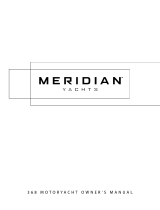 Meridian Yachts 368 Owner's manual
Meridian Yachts 368 Owner's manual
-
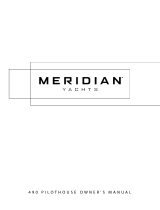 Meridian Yachts 490 Owner's manual
Meridian Yachts 490 Owner's manual
-
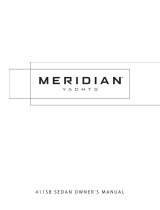 Meridian Yachts 411SB Sedan Owner's manual
Meridian Yachts 411SB Sedan Owner's manual
-
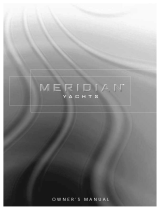 Meridian Yachts Yacht Owner's manual
Meridian Yachts Yacht Owner's manual
-
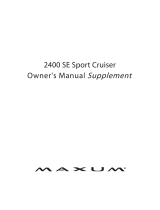 Maxum 2700 SE SPORT EXPRESS CRUISER Owner's Manual Supplement
Maxum 2700 SE SPORT EXPRESS CRUISER Owner's Manual Supplement
-
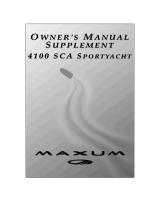 Maxum 4100 SCA Sportyacht Specification
Maxum 4100 SCA Sportyacht Specification
-
 mjm yachts 40z Downeast Owner's manual
mjm yachts 40z Downeast Owner's manual
-
Bavaria 36’ ESCAPE User manual
-
Nanni QMF 6M User manual


























































